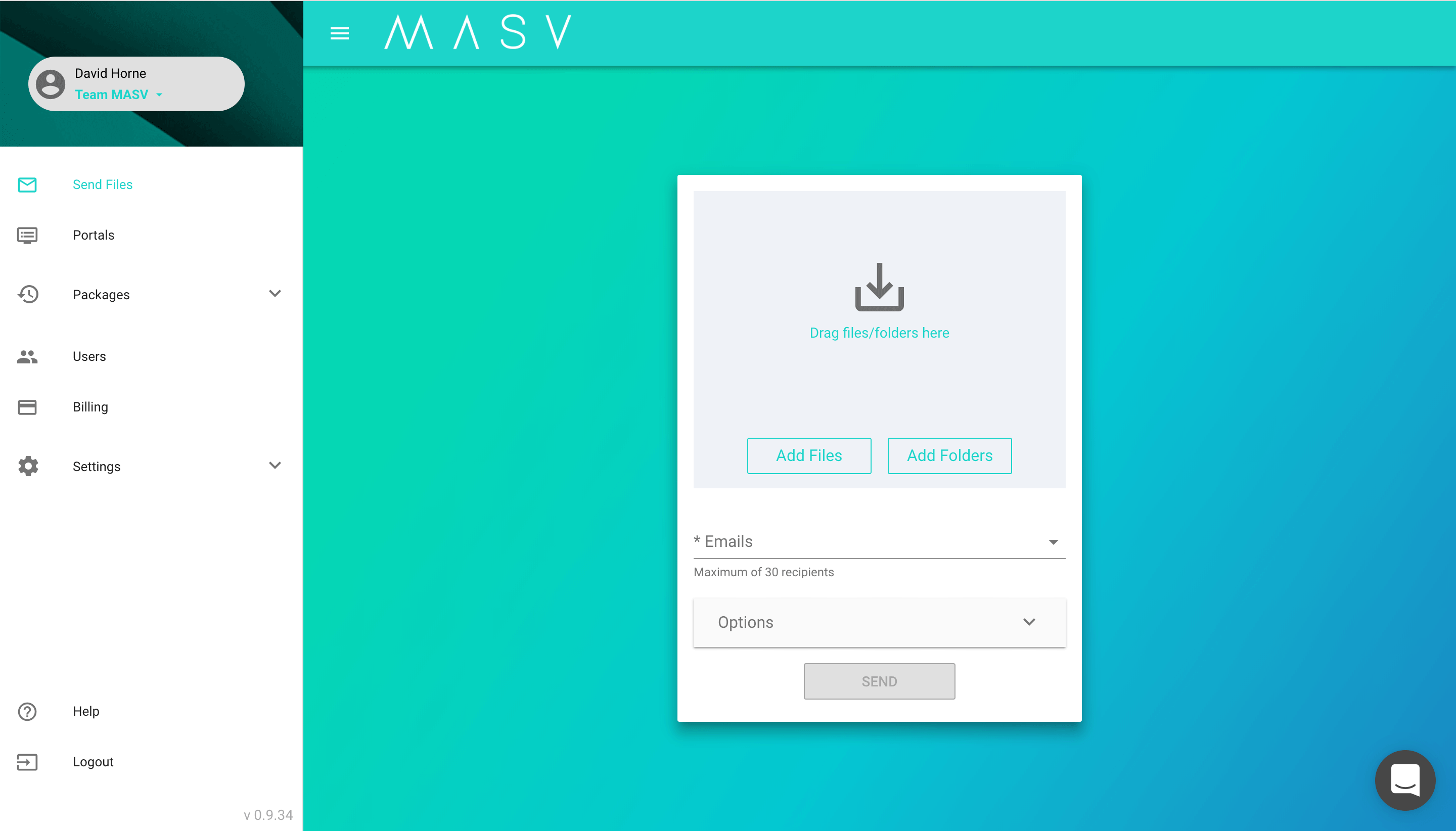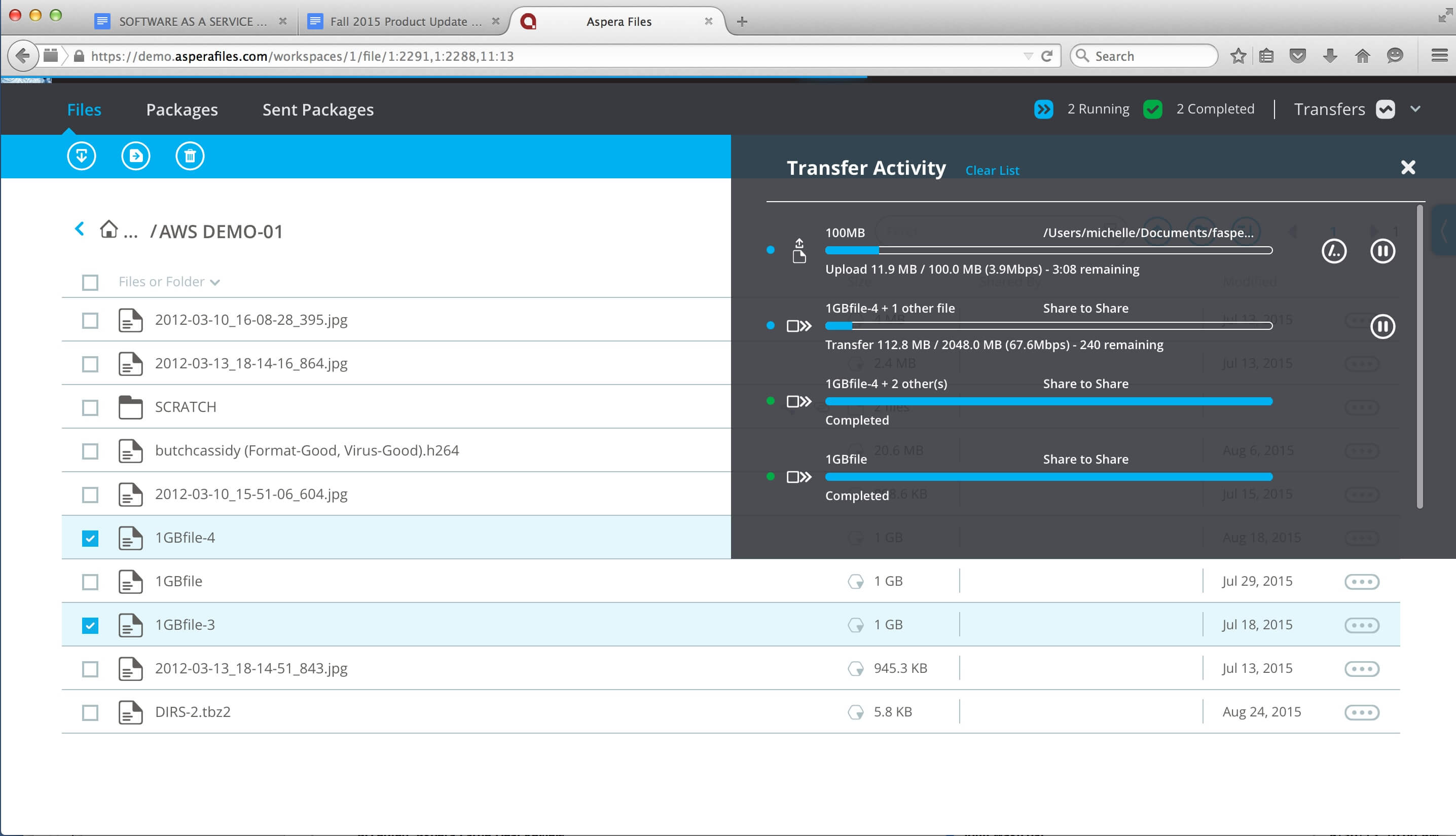How To Upload Large Video Files
File sizes are exploding, and with that comes the challenge of how to still send them in a quick, secure way. In that sense, figuring out how to ship large videos tin can seem like an almost impossible task. This is a significant hurting signal for freelancers, hobbyist video editors, post-production houses, and broadcasters alike as workflows continually adapt to digitization.
A recent 4K Shooters commodity points out that a single hr of 4K footage is a whopping 318 GB, and those file sizes don't seem to be slowing down someday soon. Therefore, we have to learn to adapt to irresolute times and burgeoning file sizes.
So, how do you collaborate on projects with geographically distant partners? Alternatively, what exercise you do when a customer asks for some of their raw footage? Having a filesharing organisation in place that's not only future-proofed for larger sizes but as well security, user-friendliness and seamless operation is critical.
In this handy guide, we'll help you figure out how to deliver video files that are time-sensitive and larger than twenty gigabytes. You might be surprised to acquire that in that location are several suitable options to choose from.
Method 1: MASV Accelerated Cloud Solution
A quick and like shooting fish in a barrel way on how to send large videos is with an accelerated cloud solution like MASV – file transfer solution. All yous need is an cyberspace connectedness.
This is a smashing option when you don't accept time for restrictions and need the fastest, virtually resilient solution. MASV was built specifically for video and post-product professionals who demand to send huge videos under a deadline. MASV sends videos every bit fast every bit your internet connexion can handle and at prices comparable to shipping hard drives—without the associated risks (or trips to FedEx)!
As an accelerated cloud solution, MASV doesn't require specialized software and tin ship files quicker than most competitors. It'south also user-friendly and allows you to send as much information as needed without whatever file size or bandwidth roadblocks.
Billing is straightforward at but $0.25 USD per gigabyte in a pay-as-y'all-go model, which also includes 10 days of storage for your delivery. We chose pay-as-you lot-become over subscription after talking with businesses in the media and amusement space. Their insights were invaluable, informing us that their business is usually project-based and monthly transfer volume tends to fluctuate drastically from calendar month to calendar month. MASV is fast and efficient through the use of our patented, deject-based TCP dispatch applied science, which ensures the production requires no technical expertise or hardware/software installation.
In tests comparing MASV to UDP solutions similar Aspera, we typically transfer at 90 pct of your internet connectedness's speed, which is just roughly ten percent slower than what yous would run across with UDP options. This was an intentional trade-off, implemented to brand our service much easier to use and set up than any number of UDP counterparts. MASV withal requires you to have a decent internet connection, every bit we can't send data faster than the amount of bandwidth y'all have available, but this applies to all standard and not-standard solutions in the manufacture.
Pros:
- Very fast
- Easy to use
- Affordable
- Like shooting fish in a barrel to implement and manage
Cons:
- Slightly less speedy and efficient compared to UDP, just less run a risk-prone
Method 2: Accelerated UDP Solutions (Aspera, Signiant, File Catalyst)
User Datagram Protocol, UDP for short, is ideal for low-latency, simplified transmissions with minimal risk of data loss. You do good from faster sends without the need to look on receiver agreements. The leaders in the UDP accelerated transfer space are Aspera, Signiant, and File Catalyst. UDP solutions can be both point to indicate, which requires an on-premise server, or through the cloud (Aspera Cloud), which is more similar a SaaS offering.
How Does This Technology Work?
This engineering works by creating a new protocol to transfer data over the cyberspace that tin can transport at very high speeds. Virtually online file transfer tools are built on top of the TCP protocol, but at that place'southward a catch—information technology was designed to share bandwidth, which means information technology is generally quite irksome.
By adding software to the sender's device and controlling the software on that of the receiver, UDP solutions can override the default behavior of the cyberspace. In short, speeds aren't throttled, meaning y'all can transport files every bit fast as your internet connection can handle.
For example, with UDP solutions utilizing a 1 Gbps upload speed, you will get close to one Gbps. Keep in mind if you or your recipient exercise not take a fast upload/download speed such as 20 Mbps or less (y'all tin find out by having them run this test https://www.speedtest.net/) yous are nevertheless merely capable of sending data at 20 Mbps, even with these tools. Nosotros always recommend using a wired network, and if wifi is the only option, make sure you apply the right wifi channel to maximize functioning. Here'south how you tin find the best wifi aqueduct for your router.
Pros:
- The fastest transfer speeds possible
- Transfers performed this way are reliable thanks to auto-retry mechanisms, pause/resume functionality, etc.
Cons:
- Very expensive (Aspera Cloud starts at $0.95 per GB and storage is non included)
- Requires technical expertise to utilize/install
- UDP is not ever accepted through firewalls; workaround solutions require specialized software installation, which tin can exist hard in restrictive IT environments
- Complicated to utilise
- Tends to have up all the bandwidth in your function and needs to exist throttled if you need to brand a Skype call or even browse the internet
Method three: Aircraft a Hard Drive
As Andrew Tanenbaum once said, "Never underestimate the bandwidth of a station wagon full of tapes hurtling down the highway." You might not be shipping tapes anymore, just the message nevertheless rings true for difficult drives. If you are trying to carry out a time-sensitive delivery of video files and either yourself or your recipient doesn't have enough bandwidth, the best option is to ship the data on a hard bulldoze through a local courier or shipping provider like FedEx.
Pros:
- You can transport a lot of data at once
- Tracking information is typically provided, equally well every bit insurance
- Shipments tin can typically occur overnight or, if local, within hours
- Shipping services are generally reliable
- The overall price is relatively low
Cons:
- Information technology's inconvenient to manage; tracking doesn't always update and you can't have changes made in one case the parcel has shipped
- Scalability becomes an issue if you must ship frequently
- Your data is in the hands of other people, representing a security risk
- International aircraft tin run across customs delays and/or shipping services can come across delivery failures
- Recovering your difficult drives can be a pain and buying new ones is expensive, to say zip of potential data loss in transit
- Shipping the same data to multiple recipients in different locations requires y'all to perform the process repetitively
Method four: Cloud Solutions
Another pick is to send data via one of several deject-based sharing services. Best of all, many people – including your clients – are familiar with services like Dropbox, Box, Google Drive, OneDrive, etc. These are effective at migrating large data libraries to the cloud, making that data available for others to download. Permissions can besides be set up so merely the intended individuals tin access or download certain files. Cloud sharing is too very affordable compared to the other solutions in this listing. Dropbox, for case, will set you lot back around $11 USD per month and enable you to transfer up to 1 terabyte of data with no file size limits.
Cloud Sharing Tools
The biggest issue with these services is when it comes to very large files (20GB+). Cloud sharing tools were designed for documents, photo sharing, and compressed video – not uncompressed video footage that takes upwardly a lot of infinite. With that in mind, these services are typically up to 10 times slower than UDP-based or accelerated cloud options. So, if your delivery is not time-sensitive and y'all don't intendance whether a transfer takes one or i dozen hours, cloud sharing is a viable selection.
WeTransfer
Another notable mention in this category is WeTransfer, which has a well-designed product that is simple to use. WeTransfer is focused on serving creatives and therefore very affordable. The only issue for video editors is the file size limits; WeTransfer lets you transport deliveries nether 2GB for gratis, and their paid version allows you lot to ship files upward to 20GB for around $10 USD per month. This is a great choice for deliveries that fit inside those file size restrictions merely isn't platonic to send big video files over 20GB in size.
Pros:
- Easy to apply
- Affordable
- Reliable
Cons:
- Inconsistent or slow performance
- WeTransfer has file size limits
There y'all take it, four cracking methods for sending big video files! If the last option interests you, note that MASV offers a 7-day complimentary trial where y'all can try sending 100 GB of free information during that period. Sign upwards beneath and become started today, and happy transferring! For all other details on MASV, feel gratuitous to get in bear upon with our team. Looking forward to helping you join the digital revolution!
Happy Transferring!
MASV is an accelerated file transfer service that specializes in sending large video files over the internet as a replacement to shipping difficult drives with FedEx. This review is intended to fairly explain the different methods bachelor for transferring big files and the considerations for each vendor in the space. We have tested and benchmarked each tool likewise as conducted many surveys with videographers around the world to empathise the pros and cons of each solution which is shared with you in a higher place.
MASV has no size limits for sending big videos. We know the media and entertainment industry moves the world'due south largest file sets. MASV supports most space file and bundle sizes. From gigabytes, to terabytes, and beyond, MASV can handle information technology. That's considering we designed MASV from the ground upwards, using state-of-the-art deject and software-defined WAN technology to ensure maximum flexibility, capacity and performance, whether you're sending files locally or beyond the world.
Source: https://massive.io/how-to-send-large-videos/
Posted by: stillmanwasonerecied.blogspot.com





0 Response to "How To Upload Large Video Files"
Post a Comment